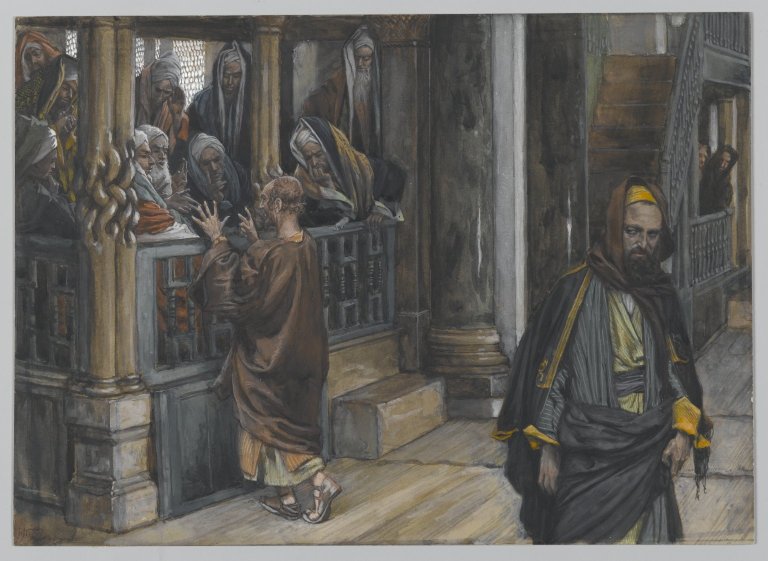
The writings of St. Augustine are not for the faint of heart. Recently I heard an Augustinian friar sheepishly confess that he never made it all the way through City of God. Even more accessible works such as The Confessions require careful attention.
Nevertheless, St. Augustine’s profound influence on Christianity and on Western culture make him required reading. This especially applies in Catholic educational institutions. Even high school students—properly guided—can begin to plumb the depths of this great saint.
As a theology teacher in a Catholic, Augustinian prep school, I want to discuss a few ways we encourage students to engage the works of St. Augustine and how we use them to draw students into a deeper encounter with Jesus Christ.
Students at our school are exposed to the life of St. Augustine starting in the sixth grade. In fact, I recently had my sophomores watch a video about his life; many of them complained that we were talking about Augustine again.
Most of what we know about the early part of St. Augustine’s life comes from his Confessions, the earliest psychological autobiography in history. We introduce students to this word during the sophomore year with a short, four-week class that carefully curates parts of the text. This helps familiarize the student with Augustine’s writing style and gets them ready for more advanced reading as high school proceeds.
In their senior year, students take a nine-week course on The Confessions. During this time, they read at least the first nine books (the autobiographical ones). This course was prepared originally by the late Theodore Tack OSA, whose book As One Struggling Christian to Another reflects on how high school students and others can apply Augustine’s search for God to their own lives.
The Confessions is a great work to encourage students preparing for graduation to ask themselves existential questions: Who am I? What do I want out of life? Why do I feel so alienated? They see in this work that St. Augustine himself asked the same questions and felt many of the same struggles late adolescents and young adults face today.
On the Morals of the Catholic Church
This work—not one of Augustine’s most famous—was penned shortly after his conversion. He wrote it to refute Manichaean moral teachings. Indeed, it may be read with its companion piece On the Morals of the Manichees. (They are published together as The Catholic and Manichaean Ways of Life.)
By their junior year, students at our school have a general idea about who the Manichees were and what they believed. An in-depth knowledge is not required to derive value from the work.
In On the Morals of the Catholic Church, Augustine explores the relationship between virtue and love and between reason and revelation. He introduces a Christian anthropology that explains why God is the chief good of humanity and discusses how grace transforms human virtue.
In short, this work provides a good introduction to Catholic moral theology. I use it in my applied ethics class for eleventh graders in conjunction with the Catechism of the Catholic Church. Certain chapters lend themselves well to discussing issues like sin, virtue, the components of a moral act, and so forth. Over the course of two or three weeks, I assign students a reading overnight. The next day in class we discuss the reading and then use it as a jumping-off point to introduce material from the Catechism.
I’ve found that students complain about the difficulty of the reading (no doubt this is not uncommon in other subjects), but they engage with the material and seem to retain the concepts introduced from the Catechism.
The Sermons and Letters
When introducing St. Augustine’s theology to students, we run the risk of turning dynamic, important issues like grace and sacraments into dry, boring “head knowledge” of heresies St. Augustine refuted. I’ve found this is a special danger in my tenth grade Church history class.
Sophomores need to understand St. Augustine’s theology of grace. Christian culture and secular society are both essentially Pelagian (though of course they disagree on what sins can be forgiven), and high school students are under tremendous pressure to be “good enough.” They need to know that on their own they will never be good enough but that God offers grace to transform them.
Yet this age group generally is not ready for advanced reading, and discussing topics like predestination quickly devolves into arguments about the doctrine of hell. Even bright students at this age respond more to St. Augustine’s life story than his teachings.
St. Augustine’s sermons, letters, and other spiritual writings can contribute to students’ understanding. The saint speaks as movingly—and often more clearly—about grace in a pastoral setting as in a theological work. He attempts to describe the relationship between grace and free will in his Treatise on John. He refutes the Donatist view of baptism in his Discourse on Psalm 32. He addresses prayer in the Letter to Proba. (All of these are excerpted in The Liturgy of the Hours.) Because these works are less technical—and less polemical—than his other writings, they communicate his teachings more clearly to sophomores.
St. Augustine offers wisdom and spiritual insight to everyone, regardless of education level. His once-a-century genius can lead high school students to believe he’s only for “smart people.” The writings discussed here can help introduce St. Augustine to the younger generation.
Charles Beard serves at St. Pius X Church in Tulsa, Oklahoma and works as a high-school theology teacher at Cascia Hall Preparatory School.






Hi. Your program for introducing St. Augustine sounds wonderful and well-thought-out. I’m curious as to the response of your students, aside from the “Augustine again” comment.
Was feedback different depending on the level? Did feedback change over time as the students learned more through the years? What were the common comments from students?
These are just some personal thoughts that came to mind.
Thanks for the article!